Today, we are going to visit one of the most buddhist town in Asia, Bangkok (Thailand). Sometimes called “The Big Chilli”, this town is considered to be one of the world’s tourist hotspots. Bangkok is Thailand’s major tourist gateway, which means that the majority of foreign tourists arrive in “Kroun Thep” (Bangkok in Thaï language). The city boasts some of the country’s most visited historical venues such as the Grand Palace, Wat Pho, and Wat Arun. There are numerous projects to maintain Bangkok’s historic sites in the Rattanakosin area and river districts.
The capital is a mix of traditional culture and technology and economic development.
Let’s go for a visit the most wonderful places full of traditions of Bangkok.
Wat Arun :
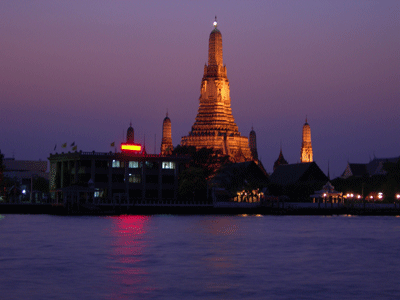
Wat Arun was built in the days of Thailand’s ancient capital of Ayutthaya, and was originally known as Wat Makok (“Olive Temple”).
Despite its name (from Aruna, the Hindu god of the dawn), the best views of Wat Arun come at sunset – there are several restaurants and coffee shops across the river that make fine viewpoints.
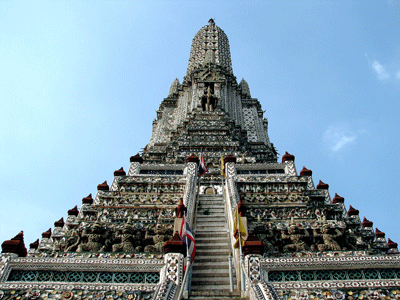
The outstanding feature of Wat Arun is its central prang (a prang is a Khmer-style pagoda), which is about 80 meters tall and symbolizes the legendary Mount Meru, center of the universe. It is possible to climb the prang, using some very steep exterior steps, to two terraces providing fine views.
Next to the prangs is the Ordination Hall with the Niramitr Buddha image said to have been designed by King Rama II. The front entrance of the Ordination Hall has a roof with a central spire, decorated in coloured ceramic and stuccowork sheated in colored china.
Wat Pho :
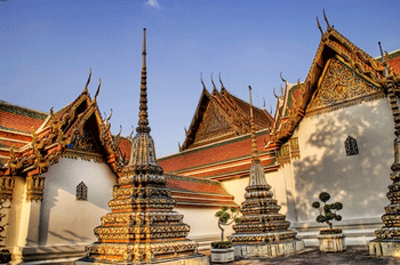
Wat Pho was built as a restoration of an earlier temple on the same site, Wat Phodharam, with work beginning in 1788. It was restored and extended in the reign of King Rama III (1824-51), and restored again in 1982.
Wat Pho is the birthplace of traditional Thai massage. Even prior to the temple’s founding, the site was a center of education for traditional Thai medicine, and statues were created showing yoga positions.
Wat Pho is the largest and oldest wat in Bangkok and is home to more than 1,000 Buddha images, more than any other temple in the country.
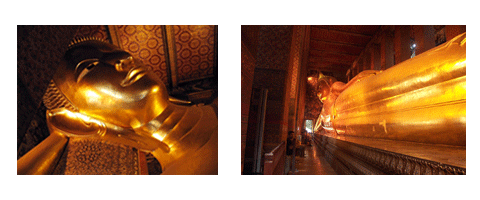
It also shelters the largest Buddha image in Thailand: the Reclining Buddha (Phra Buddhasaiyas). Created as part of Rama III’s restoration (1824-51), the Reclining Buddha is 46 meters long and 15 meters high.
Wat Phra Keow :
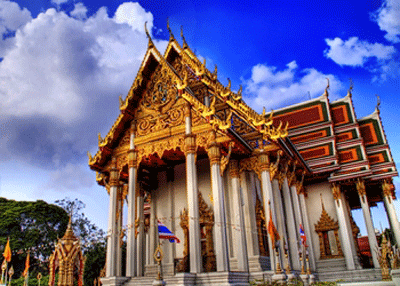
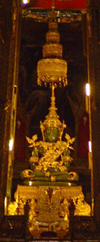
Wat Phra Kaew (“Temple of the Holy Jewel Image”), also spelled Wat Phra Kaeo and commonly known as the Temple of the Emerald Buddha, is located on the ground of the Royal Palace in Bangkok. It is the most revered Buddhist shrine in Thailand.
Central to the temple is the Emerald Buddha, a dark green statue standing about 2 feet tall. No one is allowed near the statue except the Thai king, who conducts rituals at the temple throughout the year.
The Temple of the Emerald Buddha sits within the grounds of the Bangkok Grand Palace, surrounded by walls more than a mile long. Inside, it contains some of the finest examples of Buddhist sculpture, architecture, painting, and decorative craft in Thailand. There are several other monuments on the temple grounds, among the most interesting of which are the three pagodas to the immediate north of the ubosoth (main building), representing the changing centers of Buddhist influence.
Phra Si Ratana Chedi, to the west, is a 19th-century Sri Lankan-style stupa housing ashes of the Buddha.
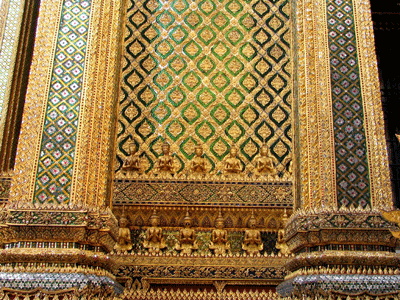
There are also a Phra Mondop, which is a library built in Thai style by Rama I, the Royal Pantheon and statues of elephants, which symbolize independence and power.
Wat Suthat :
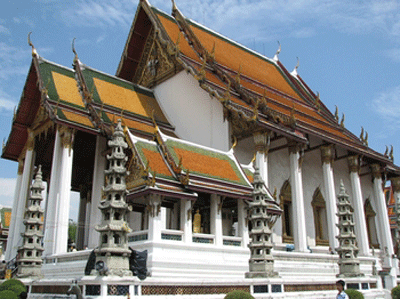

Wat Suthat is one of the oldest and largest temples in Bangkok, famed for its beautiful roofline, huge golden Buddha, magnificent frescoes and giant swing out front.
The main wihan (hall) of Wat Suthat houses a beautiful 13th-century Phra Buddha Shakyamuni, a bronze Buddha image over 8m (25ft) tall. The ashes of King Rama VIII, brother of the current king, are contained in its base.
The splendid wall paintings cover an area of 2565 sq. m (27,450 sq. ft) and are perhaps the most extensive and important of their kind in Thailand. They underwent thorough and costly restoration in the late 1980s, after significant damage caused mainly by bat droppings.
Outside stand many Chinese pagodas, bronze horses, and figures of Chinese soldiers. The statues are said to have been shipped from China as ballast in rice boats during the reign of Rama I. The Buddhist temple is also closely associated with Hinduism.
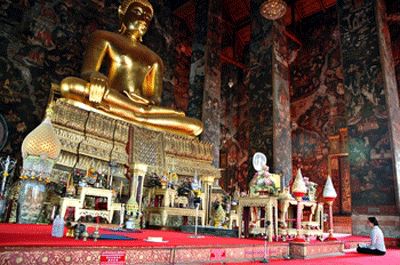
Wat Saket (Temple of the Golden Mount) :
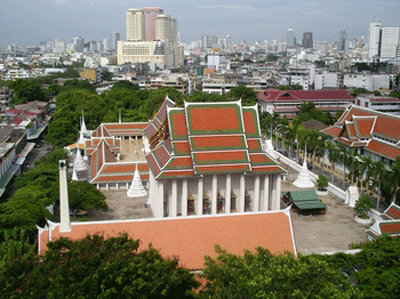
A well-known landmark, the towering gold chedi of Wat Saket was once the highest point in Bangkok. It is notable for its spectacular views and its hosting of the annual Loy Kratong festival.
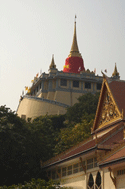
Wat Saket is not generally considered a notable temple in its own right, and most visitors come for the Golden Mount. However, it is interesting for its long history and its use as a cremation and burial site for so many people.
To the reach the top of the Golden Mount, you must ascend an exhausting 318 steps. On a clear day, the view from the top includes old Rattanakosin Island and the rooftops of Bangkok.
Wat Benchamabophit :
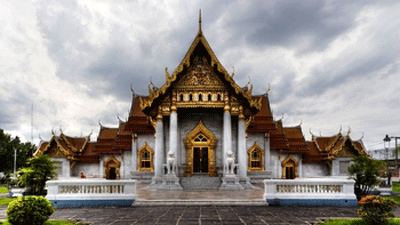
Wat Benchamabophit (the Marble Temple) is named for the gleaming white Carrara marble (from Italy) of which it is constructed. The most modern and one of the most beautiful of Bangkok’s royal wats, Wat Benchamabophit is also notable for its use of European designs.
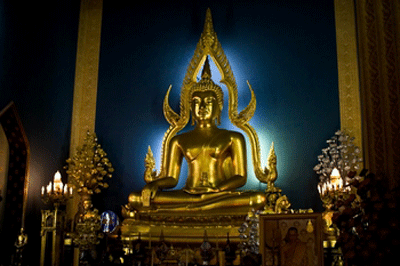
Wat Benchamabophit was built in 1899 by Prince Narai, half-brother of Rama V. Beyond the main bot is a cloister containing over 50 bronze Buddha images in many different styles, representing various Buddhist countries and regions. Behind the cloister is a large Bodhi tree, bought from Bodhgaya (where the Buddha found Enlightenment) as a gift for King Chulalongkorn.
As you can read, Bangkok is full of temples. These are the greater and the principals but there are more in the districts and else.




